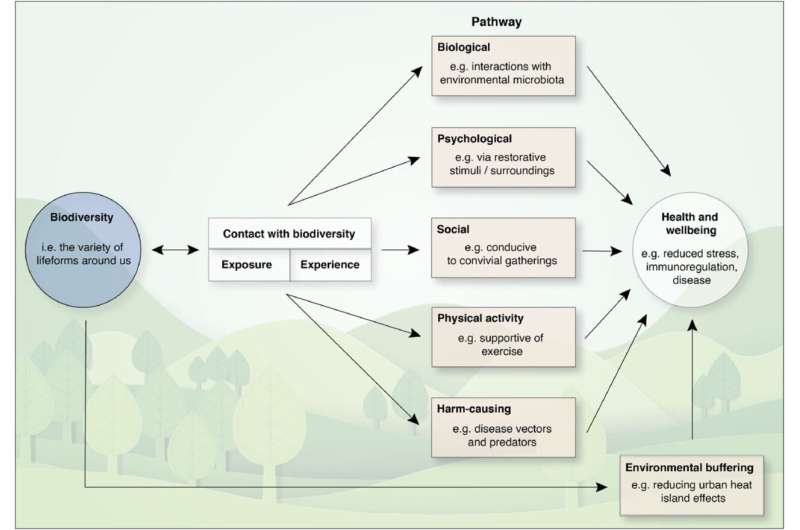This article has been reviewed according to Science X's editorial process and policies. Editors have highlighted the following attributes while ensuring the content's credibility:
fact-checked
peer-reviewed publication
trusted source
proofread
Utilizing machine learning models for new directions in housing planning

Machine learning models for more sustainable and affordable housing in regional areas, assessing bushfire risk as well as consideration for disability, biodiversity and also a place for animals in urban residential settings present new perspectives on future town planning and the housing market.
These alternatives were presented in five different Flinders University studies which applied different lenses to various aspects of future residential living and housing development.
In the first study Flinders University spatial science and data analytics expert Dr. Ali Soltani applied advanced machine learning algorithms to explore the relationships between prices paid for more than 10,000 regional house sales in 2010-21 and microeconomic and socioeconomic factors to unlock insights into South Australian housing price behavior.
They studied 10,235 properties sold in the western area of regional South Australia—including major towns of Port Augusta, Whyalla and Port Lincoln—showing a preference to coastal locations than hinterland, more remote areas and a significant overall price rise for more affordable houses in rural towns during the COVID-19 pandemic.
"The key finding is that machine learning models outperform traditional econometric models in predicting regional housing prices, with higher accuracy and fit—offering valuable insights for policymakers, real estate professionals and other stakeholders to inform regional planning, infrastructure provision and economic development strategies," says Dr. Soltani, who worked on the project with co-author Professor Chyi Lini Lee from the UNSW City Futures Research Center.
Dr. Soltani says the new approach sheds light on the complex, non-linear dynamics of housing markets at a time when remote work and city housing prices are improving demand for residential development in South Australia's and possibly other regional areas.
"The non-linear dynamics of South Australian regional housing markets: A machine learning approach," by Ali Soltani and Chyi Lin Lee, has been published in Applied Geography.
In a second study, published in Ecological Informatics, Flinders University researchers used remote sensing technology and computer mapping to accurately measure bushfire recovery in regional landscapes. These tools could also support future planning and conservation measures in Australia.
In a third study in the journal Social Sciences, Flinders University researchers used an inclusive framework to highlight the needs of adults with intellectual and development disabilities—and their caregivers and service providers—in housing and future planning.
"Research shows that adults with intellectual disabilities tend not to participate in decision-making about where they live," says Associate Professor Ruth Walker, who is leading an ARC Linkage Project titled "Choosing the way forward: addressing post-parental housing transition needs of adults with intellectual disability and their older family caregivers."
"This pilot study highlights the potential to empower people living with disabilities by including them in all processes in future housing planning," says Associate Professor Walker.
Optimizing urban green spaces and blue (aquatic) environments to maximize human health and biodiversity is the focus of one of the latest studies from a Flinders research group led by Associate Professor Martin Breed.
Researchers are building a body of work to identify and establish frameworks to incorporate specific biodiversity metrics to elevate and improve relationships between human health and more positive environmental exposures in cities.
"From the soil up, we are seeking to highlight under-represented linkages between human health and well-being and the environment in the urban living experience," adds Associate Professor Breed, co-author of another article titled "Probiotic Cities: microbiome-integrated design for healthy urban ecosystems."
"There is a need to improve policy settings to promote and manage ecosystem restoration as a public health intervention," says microbial ecologist Dr. Jake Robinson, first author of a new article in Environmental Research.
See also "Biodiversity and human health: A scoping review and examples of underrepresented linkages," by Jake M Robinson, Andrew C Breed, Araceli Camargo, Nicole Redvers, Martin F Breed, published in Environmental Research
A fifth study, published in Animals and Science Fiction, focusing on more 'sustainable' urban development investigates the relative absence of animals in town planning and urban design.
"Pets and even wild animals offer direct benefits to humans as a way to reconnect with nature or for exercise and companionship," the researchers point out in a new book chapter.
"This study helps us to reimagine an alternative to the existing 30-year planning strategy and present an alternative vision for human-animal relations in Melbourne by 2050," says Flinders researcher Dr. Zoei Sutton.
More information: Ali Soltani et al, The non-linear dynamics of South Australian regional housing markets: A machine learning approach, Applied Geography (2024). DOI: 10.1016/j.apgeog.2024.103248
Wenjie Liu et al, Remote sensing delineation of wildfire spatial extents and post-fire recovery along a semi-arid climate gradient, Ecological Informatics (2023). DOI: 10.1016/j.ecoinf.2023.102304
Irene Belperio et al, Using Inclusive Research Methods and the Housing Pathways Framework in Future Planning and Housing Research: A Pilot Study, Social Sciences (2024). DOI: 10.3390/socsci13030170
Zoei Sutton et al, A Multispecies Right to the City? Reimagining the Speculative Narratives of Urban Sustainability, Animals and Science Fiction (2024). DOI: 10.1007/978-3-031-41695-8_16
Jake M. Robinson et al, Biodiversity and human health: A scoping review and examples of underrepresented linkages, Environmental Research (2024). DOI: 10.1016/j.envres.2024.118115
Journal information: Environmental Research
Provided by Flinders University



















